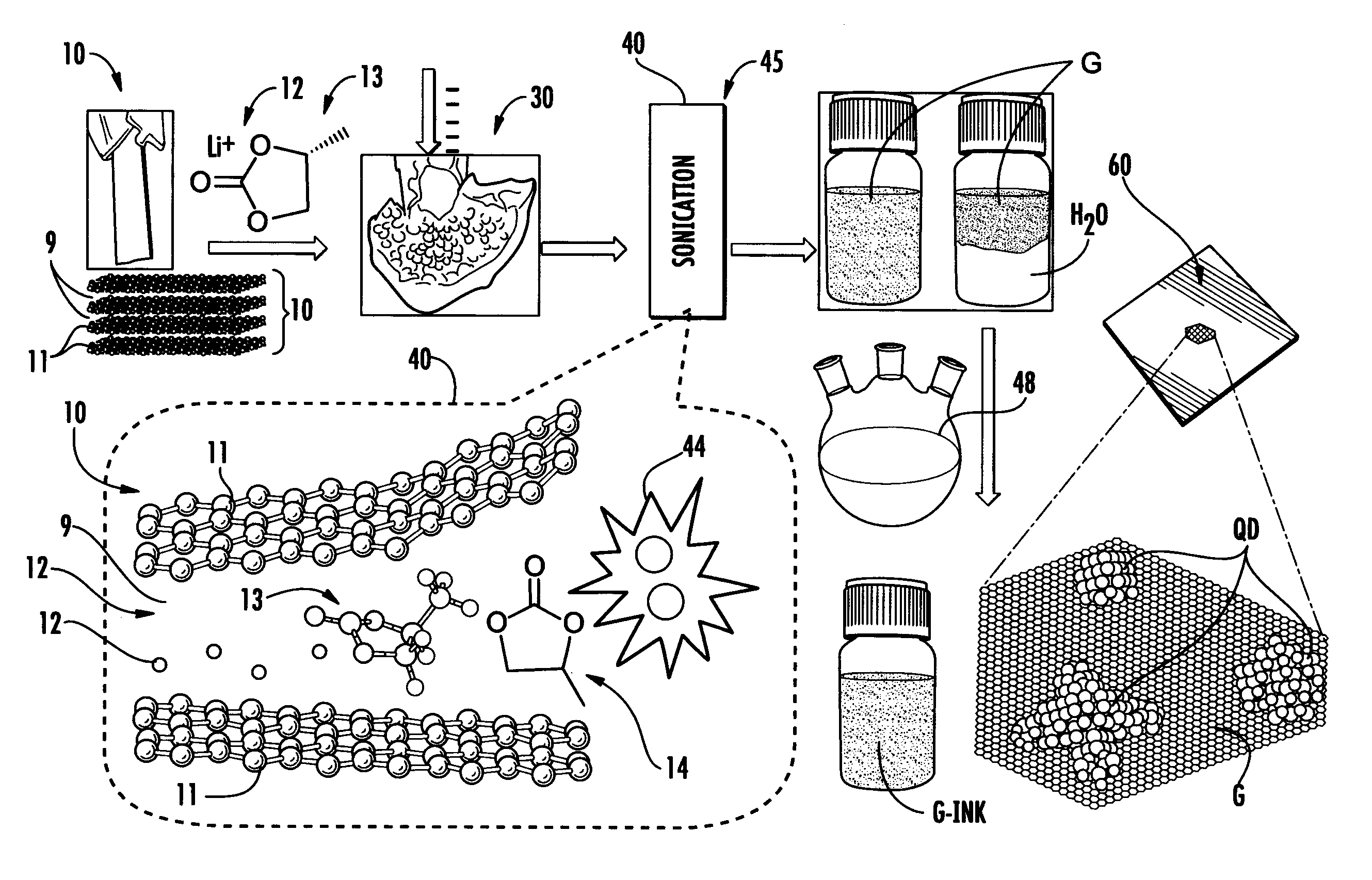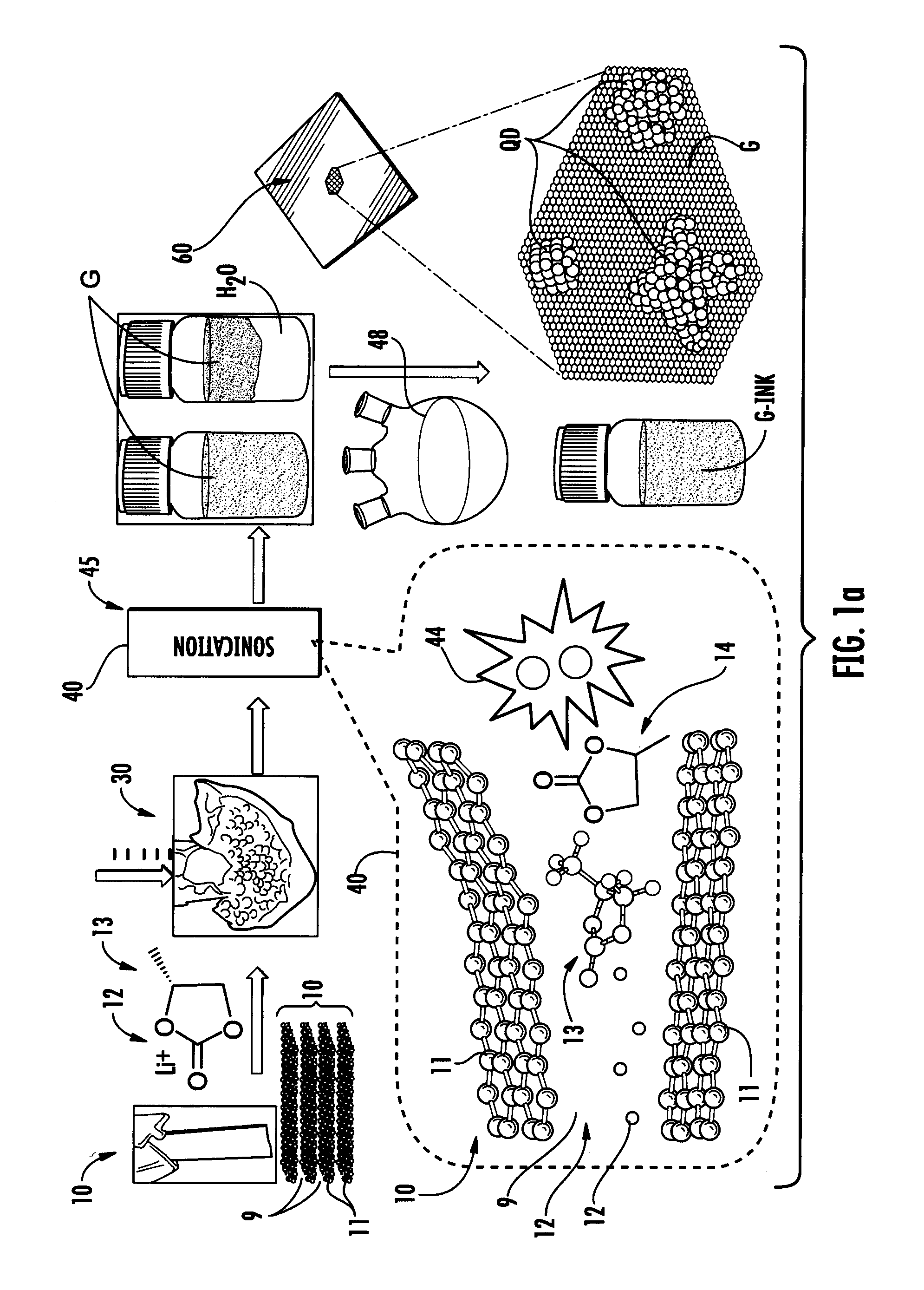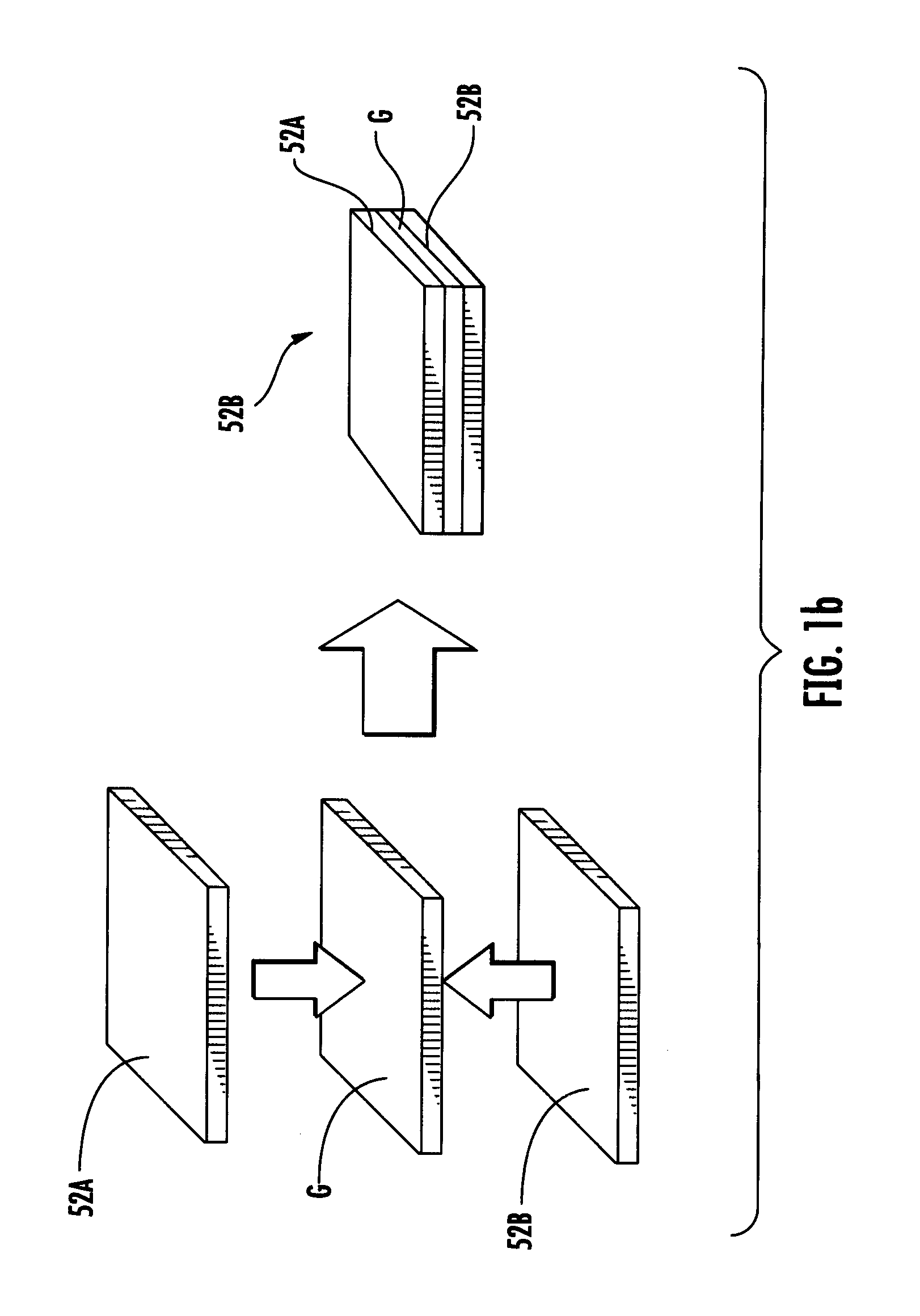Methods of forming graphene by graphite exfoliation
a graphene and graphite technology, applied in the field of graphene exfoliation, can solve the problems of high defect density, inability to solve the problem of graphene exfoliation, and inability to produce graphene samples with poor crystalline quality and high defect density, and achieve low cost, facilitate fabrication of a wide variety of graphene-based devices, and record power conversion efficiency
- Summary
- Abstract
- Description
- Claims
- Application Information
AI Technical Summary
Benefits of technology
Problems solved by technology
Method used
Image
Examples
first embodiment
[0046]In a first aspect of the disclosure, the exfoliation process involves a non-oxidative wet process to exfoliate graphite 10 or other layered materials. The non-oxidative process involves the electrochemical co-intercalation 44 of electrolyte-related ions and organic molecules into the graphite sample 10 to expand the graphite interlayers 11. Example organic molecules include carbonate electrolytes, such as propylene carbonate, ethylene carbonate, poly (propylene carbonate), and dimethylformamide). The expanded graphite 10 is finally exfoliated into graphene flakes G using the at least one driving force 45, e.g., the aforementioned sonochemical treatment 40.
second embodiment
[0047]In the disclosure, the expansion of the graphite interlayers 11 is performed by different types of lithium ion salts 12 and nonaqueous liquid electrolytes. These may include by way of example: a) Lithium salts such as lithium perchlorate (LiClO4), lithium hexafluorophosphate (LiPF6), lithium tetrafluoroborate (LiBF4), lithium chloride (LiCl), lithium iodide (LiI), lithium borates with aromatic ligands, lithium chelatophosphates; b) Nonaqueous liquid electrolytes such as linear dialkyl carbonates, ethylene carbonate (EC), propylene carbonate (PC), dimethyl carbonate (DMC), cis-butylene carbonates, dimethylformamide), tetrahydrofuran (THF), 2-methyltetrahydrofuran (2-Me-THF), dimethoxy propane, diethoxyethane (DEE), dimethoxyethane (DME) and poly(ethylene oxide) (PEO), polycarbonate, and polymethoxy ethers.
third embodiment
[0048]In the disclosure, the exfoliation process of the intercalated (expanded) graphite 10 is achieved using any of the following driving forces 45: a sonochemical process, a thermal treatment, a microwave treatment, or combinations thereof.
General Aspects and Method
[0049]Aspects of the disclosure discussed in greater detail below include methods of applying graphene G to paper to form conductive paper, and applying graphene G to a transparent substrate such as a plastic film. FIG. 1a shows a graphene-based ink G-INK formed by the above-described fifth process 48.
[0050]Aspects of the disclosure include methods of coating or otherwise applying quantum dots QD to graphene G, as illustrated in FIG. 1a. This process is not limited to the types of quantum dots or inorganic nanoparticles. Example quantum dots QD are related to II-VI or VI-IV group chalcogenide semiconductor nanocrystals, (such as CdS, CdSe, CdTe, PbSe, PbS, PbSexSy, PbTe, Sb2S3, Cu2S, ZnS, SnTe, etc) and oxides (such as ...
PUM
| Property | Measurement | Unit |
|---|---|---|
| ionic radius | aaaaa | aaaaa |
| size distribution | aaaaa | aaaaa |
| thickness | aaaaa | aaaaa |
Abstract
Description
Claims
Application Information
 Login to View More
Login to View More - R&D
- Intellectual Property
- Life Sciences
- Materials
- Tech Scout
- Unparalleled Data Quality
- Higher Quality Content
- 60% Fewer Hallucinations
Browse by: Latest US Patents, China's latest patents, Technical Efficacy Thesaurus, Application Domain, Technology Topic, Popular Technical Reports.
© 2025 PatSnap. All rights reserved.Legal|Privacy policy|Modern Slavery Act Transparency Statement|Sitemap|About US| Contact US: help@patsnap.com



